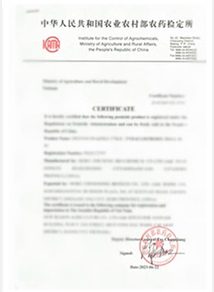
Ara . 11, 2024 05:20 Back to list
High-Quality Azoxystrobin and Tebuconazole Mixture for Effective Crop Protection
Understanding the Importance of Azoxystrobin and Tebuconazole in Modern Agriculture
In the ever-evolving landscape of agriculture, the use of high-quality active ingredients in crop protection is paramount. Among these, azoxystrobin and tebuconazole stand out as two significant fungicides that have revolutionized the management of various plant diseases. This article explores the benefits, applications, and the critical role these compounds play in sustainable agricultural practices.
What are Azoxystrobin and Tebuconazole?
Azoxystrobin is a member of the strobilurin class of fungicides, known for its systemic action and broad-spectrum efficacy against a wide array of fungal pathogens. It works primarily by inhibiting mitochondrial respiration in fungi, which is essential for their energy production. This mode of action not only provides immediate protective benefits but also promotes a prolonged period of disease control.
On the other hand, tebuconazole belongs to the triazole class of fungicides. It is particularly effective against a variety of fungal diseases, including rusts, blights, and leaf spots. Tebuconazole works by interfering with fungal cell membrane synthesis, ultimately leading to cellular dysfunction and mortality of the pathogens.
Efficacy in Crop Protection
The combination of azoxystrobin and tebuconazole has been proven to deliver superior protection for crops, enhancing yields and quality. This synergistic relationship allows farmers to combat diseases proactively and reactively. For instance, azoxystrobin’s long residual activity protects plants from reinfection, while tebuconazole’s fast-acting nature ensures quick results against acute infections.
These fungicides are particularly beneficial in high-value crops such as cereals, fruits, and vegetables. Their application can help mitigate yield losses and ensure that crops reach the market in prime condition. The ability to manage diseases effectively translates into increased profitability for farmers and contributes to food security, which is increasingly critical in our growing global population.
high quality azoxystrobin 20 tebuconazol 20

Environmental Considerations and Integrated Pest Management (IPM)
One of the most significant concerns surrounding pesticide use is environmental impact. Fortunately, both azoxystrobin and tebuconazole are designed with this in mind. They possess low toxicity to non-target organisms, which makes them suitable candidates for integrated pest management (IPM) strategies. IPM combines biological, cultural, and chemical practices to manage pests and diseases sustainably.
Farmers using these fungicides can optimize their application by adopting precision techniques to minimize environmental footprint. This allows for the targeting of specific pests while reducing the overall pesticide burden on ecosystems. Additionally, using fungicides judiciously helps prevent the development of resistant strains of fungi, ensuring long-term effectiveness.
Conclusion The Future of Crop Protection
As agriculture strives to meet the challenges of food production in a sustainable manner, the role of high-quality fungicides like azoxystrobin and tebuconazole cannot be overstated. Their effectiveness in disease management, coupled with environmental considerations, positions them as essential tools for modern farming practices.
Farmers must remain informed about the latest research and innovations surrounding these compounds to maximize their potential benefits. Continuous investment in agricultural education and research will be vital in ensuring that these products are used responsibly and effectively, ultimately benefitting the agricultural sector and society as a whole.
In conclusion, the integration of azoxystrobin and tebuconazole into crop management strategies exemplifies a forward-thinking approach to agriculture, one that balances productivity with environmental stewardship. By embracing these high-quality fungicides, we can pave the way for a more resilient agricultural landscape capable of meeting the demands of future generations.
-
Vexis Herbicide – Advanced Selective Control, Compare with Tenacity 8oz Mesotrione Selective & Non-Selective Solutions
NewsJun.24,2025
-
Dicamba Herbicide for Creeping Charlie – Effective & Selective Weed Control Solution
NewsJun.10,2025
-
Premium Penthiopyrad Fungicide for Effective Crop Protection Compare with Carbendazim & Copper Fungicides
NewsJun.10,2025
-
Top Products Containing Bifenthrin Effective Insecticide Solutions
NewsJun.10,2025
-
Powerful Lambda Cyhalothrin & Emamectin Benzoate Insecticide
NewsJun.10,2025
-
Emamectin Benzoate 5% Wholesale Supplier - Premium Quality
NewsJun.10,2025
